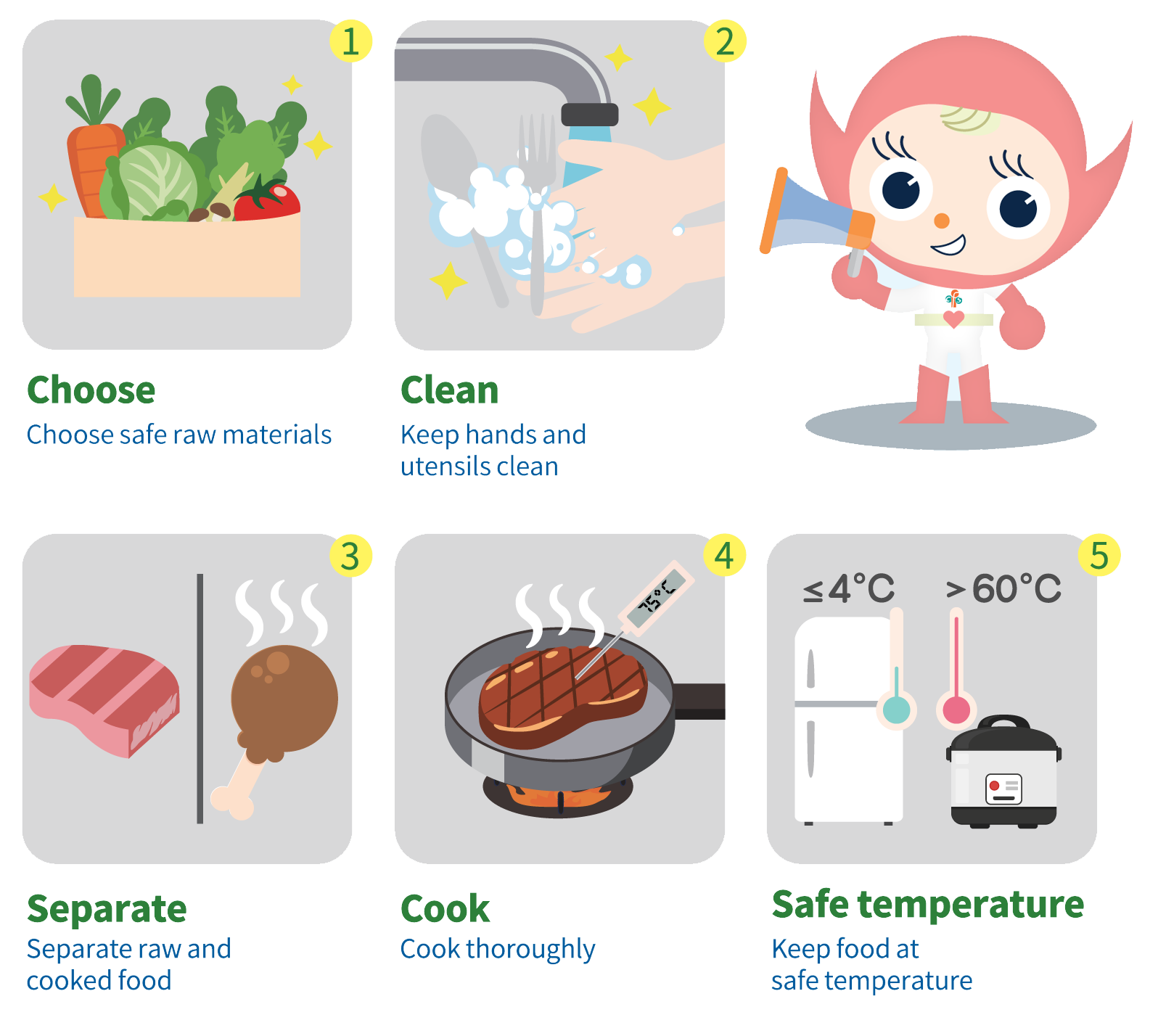What is antimicrobial resistance?
Antimicrobial resistance (AMR) is the ability of a microorganism, most significantly bacteria, to stop an antimicrobial agent, such as antibiotics, from working against it. As a result, standard treatments become ineffective, infections persist and may spread to others. AMR bacteria, otherwise known as "superbugs", are not necessarily pathogens. They can also be commensal bacteria that derive benefits from their association with humans and are generally harmless. As such, people infected by "superbugs" can be asymptomatic. Nevertheless, AMR is a natural phenomenon. Microorganisms gain resistance spontaneously by gene mutation or gene transfer among each other.
AMR and food safety
AMR is also a food safety concern. "Superbugs" developed in animal gut can spread through the food chain. When the food-producing animals are slaughtered, meat and their products can be contaminated by the excreta colonised with "superbugs". "Superbugs" can also enter the food chain through faecal contamination of soil or water, and spread to fruits, vegetables or other produce that are irrigated with contaminated water. People may be exposed to "superbugs" when they consume contaminated food without being thoroughly cooked, prepare food with poor food hygiene practice, or contact with animal manure.
- Global trend of AMR in food
- Frequently Asked Questions
- "Know More about 'superbug' Hidden in Food" pamphlet
- Ready-to-eat Food ─ General Hygiene Advice for Food Businesses
- How to address "superbugs" in food
What kind of food is riskier?
In general, foods of animal origin represent the major route that humans come into contact with foodborne "superbugs". Raw or uncooked food is more likely to have bacteria, including "superbugs", derived from the primary production than thoroughly cooked foods. Susceptible individuals should avoid eating them.
Follow Five Keys to Food Safety
While inappropriate food-handling encourages the spread of AMR, education in safe food handling is a key measure for prevention of foodborne diseases, including containing AMR. The Centre for Food Safety (CFS) has all along been promoting "Five Keys to Food Safety" to the public and food businesses, reminding them to maintain good personal and environmental hygiene during all food preparation and handling processes.

From the food safety perspective, following the Five Keys can reduce the risk of both "superbugs" and foodborne illnesses.
|
Five Keys |
Advice(s) |
Why important? |
|---|---|---|
|
Choose |
|
|
|
Cook |
|
|
|
Clean |
|
|
|
|
|
|
Separate |
|
|
|
Safe Temperature |
|
|
Also, food handlers should avoid preparing food if suffering from vomiting and diarrhoea.
The works of the CFS
Locally, the Government of HKSAR has launched the “Hong Kong Strategy and Action Plan on Antimicrobial Resistance 2023-2027” (Action Plan). The Centre for Food Safety (CFS) has been actively participating in the initiative of the Action Plan and has participated in the Working Group on AMR One Health Surveillance under the Action Plan.
A comprehensive surveillance programme of AMR is an integral part of the risk analysis framework from the perspective of food safety. Surveillance data of foodborne AMR, together with data of antimicrobial use, may help to identify potential relationship between the prevalence of foodborne AMR and the use of antimicrobials in animal sector. In Hong Kong, the CFS implements a routine surveillance programme on AMR in raw meat as well as ready-to-eat food.
In terms of education, the CFS promotes the "Five Keys to Food Safety" to the public and the trade to combat "superbugs" in food through various channels. Every year, the CFS rides on global event like "World Antimicrobial Awareness Week" in November to promote our messaging on AMR in food. Furthermore, the CFS has issued a set of trade guidelines aiming to facilitate food businesses in informing consumers of the increase risk of consuming raw/undercooked foods and ingredients in ready-to-eat foods served to them. Consumers can be informed by brochures, advisories on signs or menus, table tents, labelling or other effective written means. The following is an example of consumer advice that restaurants can provide, and it applies to raw or undercooked high-risk foods.
- Statistics of food handlers training on AMR
- "Guidelines for Food Businesses on Providing Consumer Advice on High-risk Foods on Menus”
- Other Educational Resources and Activities
Hong Kong's actions on addressing AMR
In view of the threat of AMR to global public health, the Government announced in the 2016 Policy Address to set up a High Level Steering Committee on AMR to formulate strategies and implement actions. As stipulated in the Chief Executive's Policy Address 2021 and 2022, the Government have drawn up the second Action Plan to map out response strategies for the next phase, covering the years from 2023 to 2027.
Under the "One Health" approach, this Action Plan highlighted clear objectives, priority interventions and target indicators to enable the Government and stakeholders to focus resources and address the threat of AMR more effectively.